Daredevils Detailed Action Time and Action Options Cube
I’m prepping a game that I’ll hopefully run at the North Texas RPG Con this year. I didn’t realize I’d be running it until after the deadline for putting a game in the online system, so if you want to play it, show up at 9:00 in the morning on Thursday at the main check-in area. It’ll be the standard 4-hour slot for that time, so you won’t miss any of the 1 o’clock games.
The Montique Fantom uses Kolchak: The Night Stalker guest stars (as well as Carl himself), is set in 1976 Chicago, and uses the Daredevils rules. I’ve been thinking about running a game with this premise for several months now. The reason I didn’t have it ready in time to submit is that I had no idea what system to use. I considered both DC Heroes, AD&D, and my own Gods & Monsters, but none of them seemed a good fit.
Then, while wandering the net looking for something else, I ran across a mention of Daredevils and discovered that FGU was still selling copies of the boxed set. I looked for some info about it, and found Action and Adventure in the Two-Fisted Thirties. It sounded a lot like what I wanted for my Kolchak game, so I ordered a copy.
I was right, though I’ll talk more about that later.
One of the many interesting things about Daredevils is the “Detailed Action Time”. Detailed Action Time is…
…used for situations where the specific actions of the characters and the time it takes them to resolve such actions are followed in close detail. The most common use of this scale is for combat.
One turn in this scale is called a Detailed Turn and lasts approximately 6 seconds. The turn is broken down into four Phases: Declaration Phase, two Action Phases, and Bookkeeping Phase.
On the Declaration phase, each character decides which Option will be chosen for the rest of the Detailed Turn. Players indicate the Option chosen by writing it down or placing a six-sided die with the number of the Option on the top face. The choice of Option is concealed from the other players until all have chosen for their characters. No characters may act on this Phase.
On an Action phase each player may select one of the Actions allowed by the Option for his character. All Actions are considered simultaneous. The Gamemaster must adjudicate the results of conflicting Actions by separate characters. To lessen confusion, the Gamemaster may wish to have the character’s Actions resolved in order of highest Deftness.
The Bookkeeping Phase is used by the Gamemaster to resolve the actions on inanimate objects and determine the results of continuous processes. Players and Gamemaster alike use this Phase to update any statistics on their characters that have altered as a result of something which occurred during the Action Phases. No characters may act on this Phase.
There are several interestingly different things in here. That “the most common use of this scale is for combat” implies that it’s meant to be more abstract than that, and handle other complex, fast-moving situations as well.
Very interesting to me is that “All Actions are considered simultaneous.” Part of the reason this is especially interesting is that nowhere else do the rules define what simultaneous means. The obvious meaning is that they all happen at the same time, just like the no-initiative system I designed for Gods & Monsters. A character that gets disabled during an Action phase will still get to take their action, even if whatever disabled them happened to be resolved beforehand.
The note that Actions might be resolved in the order of highest Deftness is both presented as optional, and only “to lessen confusion”. There’s no explanation of why you would use Deftness rather than, say, Wit or the even more obvious Speed.
Other than the obvious dictionary meaning of “simultaneous”, however, there’s no direct support for my interpretation. Under the “Shoot” Action, there is the note that “An Engaged character must make a Deftness Critical Saving Throw to get the shot off.” The term “Engaged” is defined: it simply means someone’s fighting them in hand-to-hand combat. Other Actions involving firing weapons or operating machinery have similar notes. There is nothing about a disabled or dead character having to make such a saving throw.
Was this because it was obvious that a disabled character doesn’t get to act, or because it was obvious what “simultaneous” means? I’m going with the latter, just because I prefer the fog of war.1
A second really interesting part of that description is somewhat related to there being no real sense of an initiative order. Players reveal their choice of Option only after every player has made their choice secretly. Options in this game are somewhat general ideas of what the character is going to do, such as move, fight, look around, or drive. As sort-of noted, there are six of them; each Option allows only a semi-specific list of more detailed Actions. The Gamemaster can add Actions according to their style of gaming, but “Each should be assigned to an Option.”
| No. | Option | Actions |
|---|---|---|
| 1 | Movement | Full Move, Jump, Alter Position, Disengage. |
| 2 | Observe/Command | Speak, Observe, Search, Ready Weapon, Defend, Alter Position, Hip Fire. |
| 3 | Engage in Combat | Strike, Defend, Ready Weapon, Disengage, Throw, Hip Fire, Alter Position, Short Move. |
| 4 | Fire Weapon | Shoot, Ready Weapon, Adopt Stance, Alter Position, Short Move. |
| 5 | Perform Function | Short Move, Alter Position, Throw, Work at Task, Short Function, Hip Fire. |
| 6 | Operate Vehicle | Throw, Short Function, Hip Fire, Defend, Speak, Observe, Strike, Drive. |
Because of this, the Declaration phase doesn’t lock characters in to a specific action, just a sense of what they want to do. And they have two actions to work with it. After each Declaration, they have two Actions before changing their Declaration.
I always try to imagine how the actual game will run when I’m prepping for a con game (or any game, for that matter) and foresaw trouble with players unfamiliar with the game having to make these choices. I also foresaw trouble reading the tops of dice at the far end of a long gaming table.
Obviously, a prop was needed (PDF File, 41.3 KB). It was simple enough to create a cube template and add the numbers and the options to each face for printing on cardstock. Because I’m moderately OCD, this is sort of a real die: opposing numbers add up to 7 as they’re supposed to, and the orientation of each face matches one of my better Gamescience dice.
You can put the cube together by cutting along the solid lines and folding along the dotted lines. There are seven tabs for gluing it together.
- June 12, 2024: Kolchak: The Wrong Goodbye (a Daredevils adventure)
-

UFO magazines from the seventies and very early eighties are a treasure trove of Kolchak adventure ideas. This isn’t surprising, since Kolchak is set in the mid-seventies and Kolchak’s peculiar logic is very similar to the peculiar logic of paranormal “researchers” of the era. It’s very often conclusion first, data second.
The idea for The Wrong Goodbye (PDF File, 2.3 MB) came from an article in the April, 1980 issue of Beyond Reality about Russian psychic research.
Top Soviet scientists maintain they are well on their way to telepathic communication with cosmonauts in deep space. They warned that if their country masters that art of direct mind-to-mind communication, they could use it for military purposes. Soviet scientific researchers carried out top secret experiments for a two-year period between 1975 and 1977 in which electrodes were placed on the brains of freshly killed rats. The rodents’ brain activity was then recorded. This activity was stimulated when a psychic projected thoughts at the dead animals.
I don’t see how you can read that second paragraph and assume it’s about the first paragraph. If Soviet psychics were stimulating the brains of dead rats that’s a lot more sinister than talking to orbiting astronauts.
Given its already strange implications, I used the article mostly verbatim. All I did was drop the years by two to make the events fit the 1976 year of the adventure. I’m running these annual adventures sequentially so that the repeat characters in the game can reference previous adventures. I’m running them a year or so after the events of the series so that players can reference the series.
I ran this adventure at the 2023 North Texas RPG Convention. It’s mostly a skeleton, but a detailed one. This is the first Daredevils adventure that I made from scratch. The others came from Fantasy Game Unlimited’s adventure compilations. I used the first one, The Body Vanishes almost verbatim, with only a minor reskin to move it to Chicago, update it to 1976, and replace the NPCs with Kolchak’s contacts. The second, The Powers of Dr. Remoux I heavily modified, to the point where all I was using was the basic idea and framework. That basic idea was further influenced by an article in another UFO magazine, and also from 1980!
- May 31, 2023: Kolchak: The Big Creep (a Daredevils adventure)
-
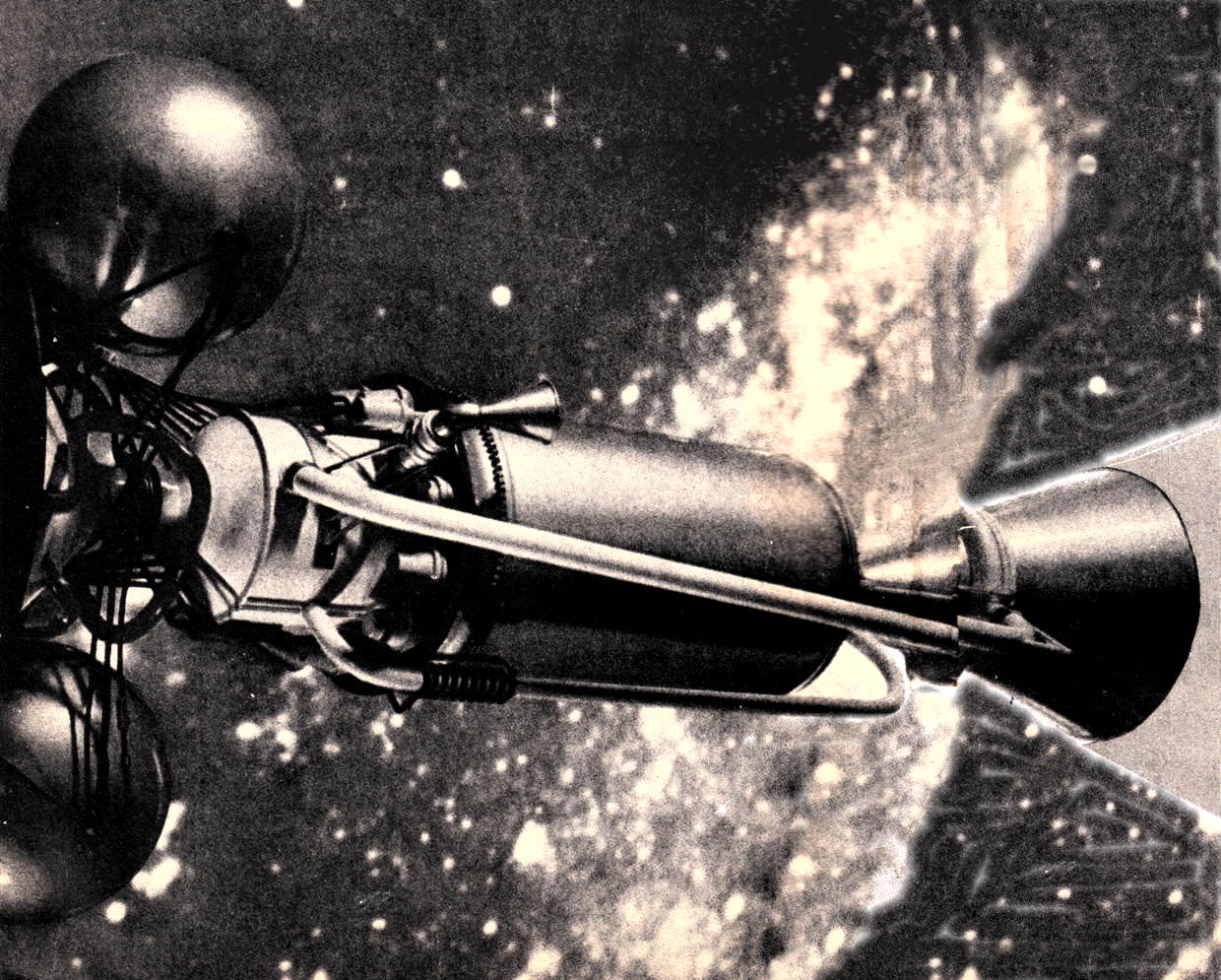
This weekend is the 2023 North Texas RPG Convention. For last year’s con, I ran the second of my Kolchak adventures. I’d initially planned on running The Powers of Dr. Remoux from Daredevils Adventures 1: Deadly Coins. Daredevils Adventures 1 is the first adventure supplement to Fantasy Game Unlimited’s Daredevils.
I started making so many changes, however, that I ended up writing up my own adventure using it as inspiration. The initial changes were simple enough. I set it at a college that had appeared in the series, Illinois State Technical College. And, of course, I updated it for 1976. College life changed a lot over those fifty years.
But the real changes began when I happened to run across an article on the Pavlita Generator in an old UFO magazine. Not only was it approximately the right time period for my adventure, but it was exactly the right way to update the adventure’s weird science from the twenties to the seventies.
U.S. intelligence officials are studying the development in Czechoslovakia of “psychotronic generators,” small devices “capable of drawing biological energy from humans and storing it for future use.”
This is exactly what Jones’s Dr. Remoux was doing, but for the UFO age and the cold war rather than the dawn of modern physics. I was further able to expand on the Cold War aspect using some real Defense documents:
- Paranormal Phenomona— Briefing on a Net Assessment Study, P.T. Van Dyke and M.L. Juncosa, WN-8019-ARPA, January 1973, Rand, Santa Monica, CA 90406.
- Soviet and Czechoslovakian Parapsychology Research, Mrs. Louis F. Maire III and Major J.D. LaMothe, MSC, DST-1810S-397–75, September 1975, Defense Intelligence Agency, Washington, DC 20301.
- June 1, 2022: Kolchak: The Montique Fantom (A Daredevils adventure)
-
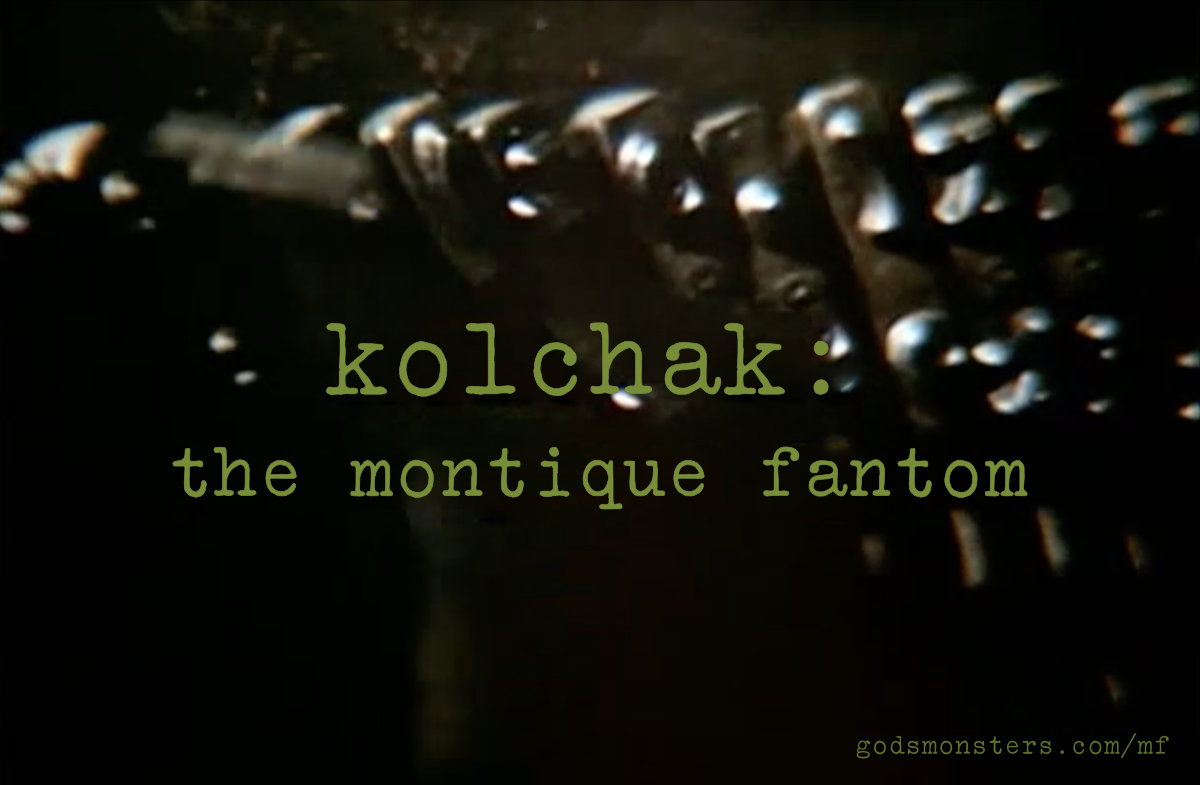
Daredevils is the perfect ruleset for a Kolchak game. I ran it last year at North Texas, using The Body Vanishes from Daredevil Adventures 3: Supernatural Thrillers. It’s a classic Kolchak-style mystery. Daredevils works great for noir, and Kolchak is a noir throwback.
Despite, and possibly because of, their lack of structure and detail, the short adventures in DA 3 are a really nice choice for a new Daredevils GM to learn the ropes of the game. While they’re not overly detailed or overly structured, they have just enough of a structure to hang a player-centric narrative onto.
The Body Vanishes is especially nice because the two endings allow for cutting the game short if necessary. It worked well for a 4-hour game without the extended ending, and would have worked even better for a 5-hour session with the extended ending.
Because the television series ended in 1975, I set the game in 1976. And because it was 1976, I set it over the July 4 weekend. This helped make some of the assumptions in the 1920s-based The Body Vanishes still work out in the seventies. It required a lot less technical ability on the part of the police, and by setting it around a major celebration I was able to get that.
Otherwise, for the most part I ran the adventure straight. What I’ve got here is a very thin skin over the original. Locations on a map of Chicago, a new timeline centered around July 4, 1976, and a few NPC replacements.
The biggest change from the television series is that this is an ensemble game. The players can choose from playing Carl Kolchak, the other series regulars, and several guest stars. The assumption is that after the series ended Kolchak has enough people convinced of strange things happening that he can assemble a team of night stalkers when necessary.
Era background
The inflation between 1921/1929 and 1976 was $3.18 through $3.39. So multiply prices by three or four as a rough guide, remembering that a lot of stuff in the Daredevils price list is illegal in 1976 Chicago. Inflation between 1976 and 2022 makes a 2022 dollar worth about $5.05 in 1976. So divide prices by five from now as a rough guide, remembering that very little technology from today is available in 1976. Phones are attached to buildings, for example, and computers are buildings.
- July 7, 2021: Automated Scribus Daredevils NPC character sheets
-
In part 1, the Daredevils NPC generator, I showed how to create simple character data in a form that makes it useful for a simple character sheet. It’s nice, however, to provide players a nice cardstock pregen with a familiar layout. I deliberately made that simple character sheet output from the daredevils script provide the data in a form that makes it easy to import into other software.
I chose to import it into Scribus, an open-source desktop publishing application that creates great PDF files and can be automated using the Python programming language. Scribus runs on macOS, Linux, and Windows.
Scribus has a Script menu; you can choose to “Execute” any Python script on your computer. I keep mine in
~/bin/Scribus, which is to say, in a folder calledScribusin a folder calledbinin my macOS user account. You can put them anywhere. An obvious location would a Scribus folder in your Documents folder.For the Kolchak game, I used a script I called
daredevils.pyto import the character sheets into Scribus, creating a new layer for each character. The bulk of the work is done in a class calledSheet. Here’s the start of that class:[toggle code]
-
class Sheet:
-
def __init__(self, characterName):
- self.skillsRect = self.getRect('skills')
- self.backgroundItems = []
- self.quotes = []
- self.characterName = characterName
- self.openSection('aspects')
- # create the layer for this character sheet
- scribus.gotoPage(1)
-
if characterName in scribus.getLayers():
- scribus.setActiveLayer(characterName)
-
else:
- scribus.createLayer(characterName)
- self.createBox('Character', characterName)
-
def __init__(self, characterName):
-
class Sheet:
- June 16, 2021: Daredevils NPC generator
-
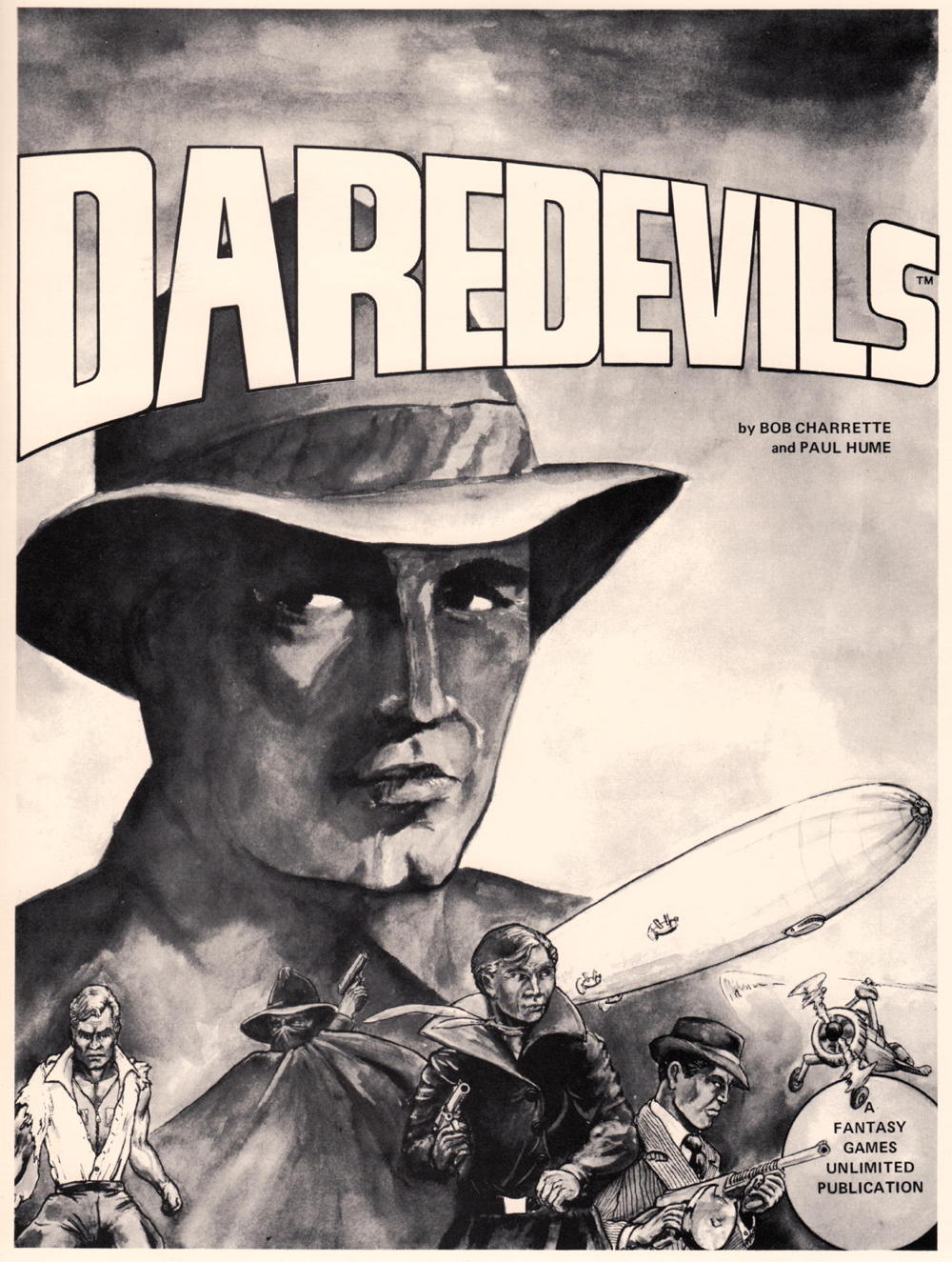
I ran a fun game of Daredevils at North Texas at the beginning of the month. I set it in 1976 in the Kolchak: The Night Stalker television series universe. I can’t take credit for how great the game was—it was the great characterization by the players of their Kolchak television series characters that made it a high point of the con for me.
But the preparation of those characters was all on me, and I pregenerated a lot of characters for them to choose from. The pregens were various sources Kolchak had used over the series. Everyone from Lila Morton (the bereaved widow from Chopper) to Charles Rolling Thunder (the aged shaman from Bad Medicine), as well as each of Carl’s colleagues at Independent News Service.
This meant a lot of character sheets and it also meant adjusting skills a lot as I attempted to make each character unique and useful to the adventure. I continued adjusting each character as I slowly went through viewing the season again—rewatching Kolchak is never a chore—and added not just stats but quotes and background.
Doing all this rewriting by hand is a recipe for disaster. So I wrote a script (Zip file, 16.8 KB) to:
- calculate each character’s calculated stats;
- handle old age for the older characters;
- verify each character’s attribute and development totals;
- keep the format of the character sheets standard.
By using a script to calculate the calculated statistics, I ensure that no character has a mistake.1 And when I wanted to add a new calculated stat, I just had to add it to the script and re-run the script on the characters to give everyone that new calculation.
In a game like Daredevils, that’s useful, because while the rulebook lists a few official calculated statistics in the character creation section, there are also unofficial calculations scattered throughout the book. These are calculations that are technically not character stats but for all practical purposes are character stats. It’s nice to give them to the players to see.
When I decided to add the Healing Rate calculation—not technically a stat—I added its calculation to the script, and it added that line to all of the character files.
When I decided to add the optional “Luck” rule, I added Luck to the script, and it added Luck to all of the character files.
A third interpretation is that the note about the bookkeeping phase means that both Action phases occur at the same time, so that even if someone is disabled on the first Action, they still get to act on the second Action. However, I’m pretty sure that the reference to updating statistics refers specifically to statistics that require calculations. Like other FGU games of the era—such as Villains and Vigilantes—there are several.
↑
- Action and Adventure in the Two-Fisted Thirties: Perdustin at Thoul’s Paradise
- “It’s like Raiders of the Lost Ark,” he finally said with a tinge of exasperation in his voice. With that, I was sold.
- Advantage in the fog of war
- An initiative-style advantage system is inappropriate to Gods & Monsters-style play. The recent changes to advantage were an experiment to see if initiative was worthwhile. My next experiment will test whether an initiative-style advantage system is unnecessary.
- Fantasy Games Unlimited
- Aftermath, Bushido, Flashing Blades, MERC, Privateers and Gentlemen, Psi World, Space Opera, Swordbearer, and Year of the Phoenix, as well as Villains and Vigilantes adventures and other oddities.
- Gamescience
- Some beautiful dice, and supposedly the highest quality dice you’re likely to find this side of Vegas.
- Gods & Monsters Rules
- All rules on creating characters and playing the game. This is what you’ll be using most as both player and adventure guide.
- Daredevils Action Options cube (PDF File, 41.3 KB)
- Print your own Action Options cube for the Daredevils role-playing game.
More Daredevils RPG
- Kolchak: The Wrong Goodbye (a Daredevils adventure)
- Kolchak and crew investigates strange murders during the 1976 Christmas season. Inspired by “real” Soviet research as reported in UFO magazines of the era.
- Kolchak’s Cold January at North Texas 2024
- I’ll be running another Kolchak: The Night Stalker game at North Texas in 2024, again using the Daredevils rules from Fantasy Games Unlimited. We finally move into 1977 for the great Chicago freeze!
- Kolchak: The Big Creep (a Daredevils adventure)
- Inspired by The Powers of Dr. Remoux, The Big Creep is a Daredevils adventure for The Night Stalker set in the autumn of 1976.
- A Kolchak Christmas at North Texas 2023
- I’ll be running another Kolchak: The Night Stalker game at North Texas in 2023, again using the Daredevils rules from Fantasy Games Unlimited.
- Kolchak: The Montique Fantom (A Daredevils adventure)
- A reskin of the Daredevils adventure The Body Vanishes for The Night Stalker in 1976.
- Three more pages with the topic Daredevils RPG, and other related pages
More North Texas RPG Con
- Kolchak’s Big Sister at North Texas 2025
- Kolchak and Friends will be back at the North Texas RPG Con in 2025 for an Ides of March that will have you asking dux femina facti? in one of the weirdest Kolchak adventures ever.
- Flashing Blades at North Texas, 2025
- I’ll be running Flashing Blades again at North Texas this year, in a game called l’Entreprenante l’Entreprenante, pitting 1705 Naval officers against 23rd century Mirror Universe Imperial Officers.
- In Honor of Jack “Bones” Burton
- High school biology teacher Jack Burton’s dream job was driving a truck across country where the only people he’d have to talk to will be on the other end of a CB radio.
- Kolchak’s Cold January at North Texas 2024
- I’ll be running another Kolchak: The Night Stalker game at North Texas in 2024, again using the Daredevils rules from Fantasy Games Unlimited. We finally move into 1977 for the great Chicago freeze!
- Flashing Blades at NTRPGC 2024
- I’ll be running a game of Flashing Blades on Wednesday at North Texas 2024.
- Seven more pages with the topic North Texas RPG Con, and other related pages

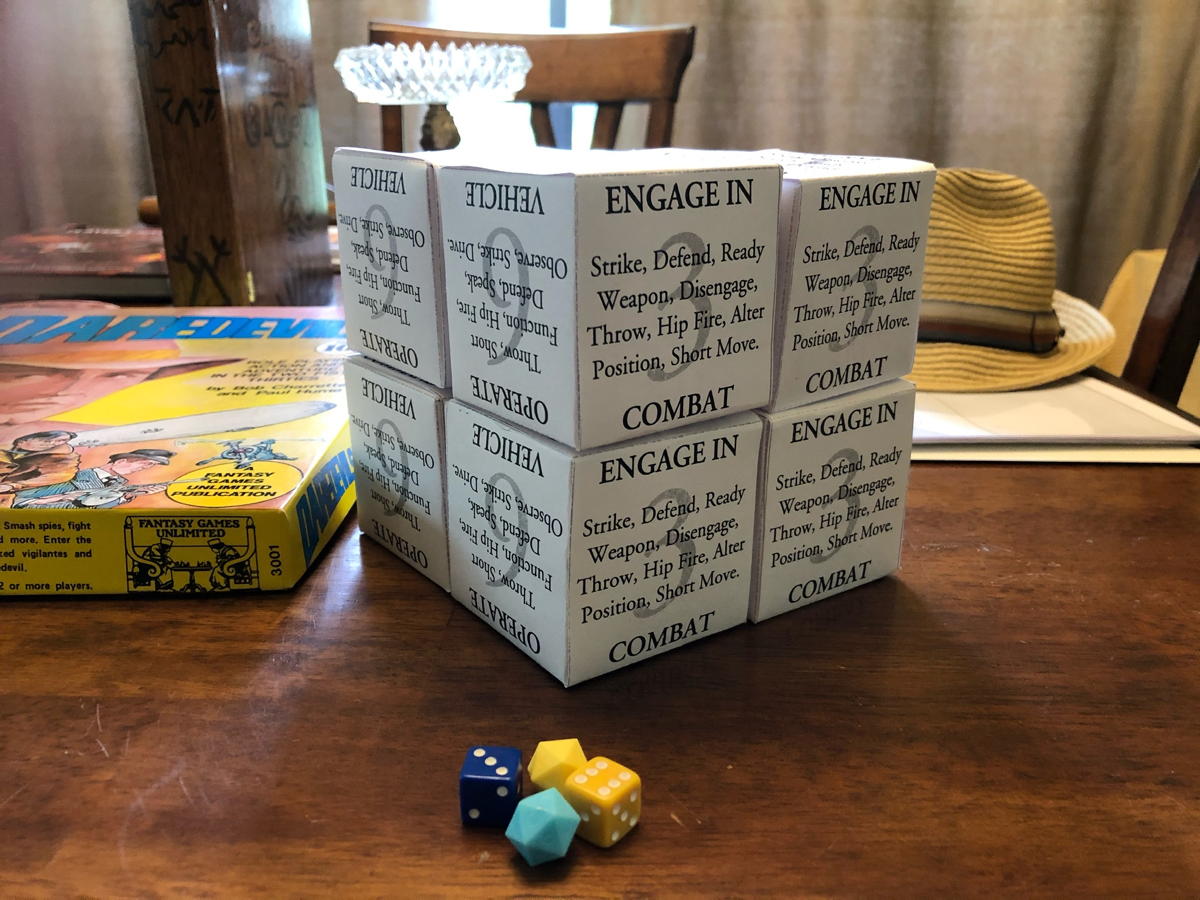
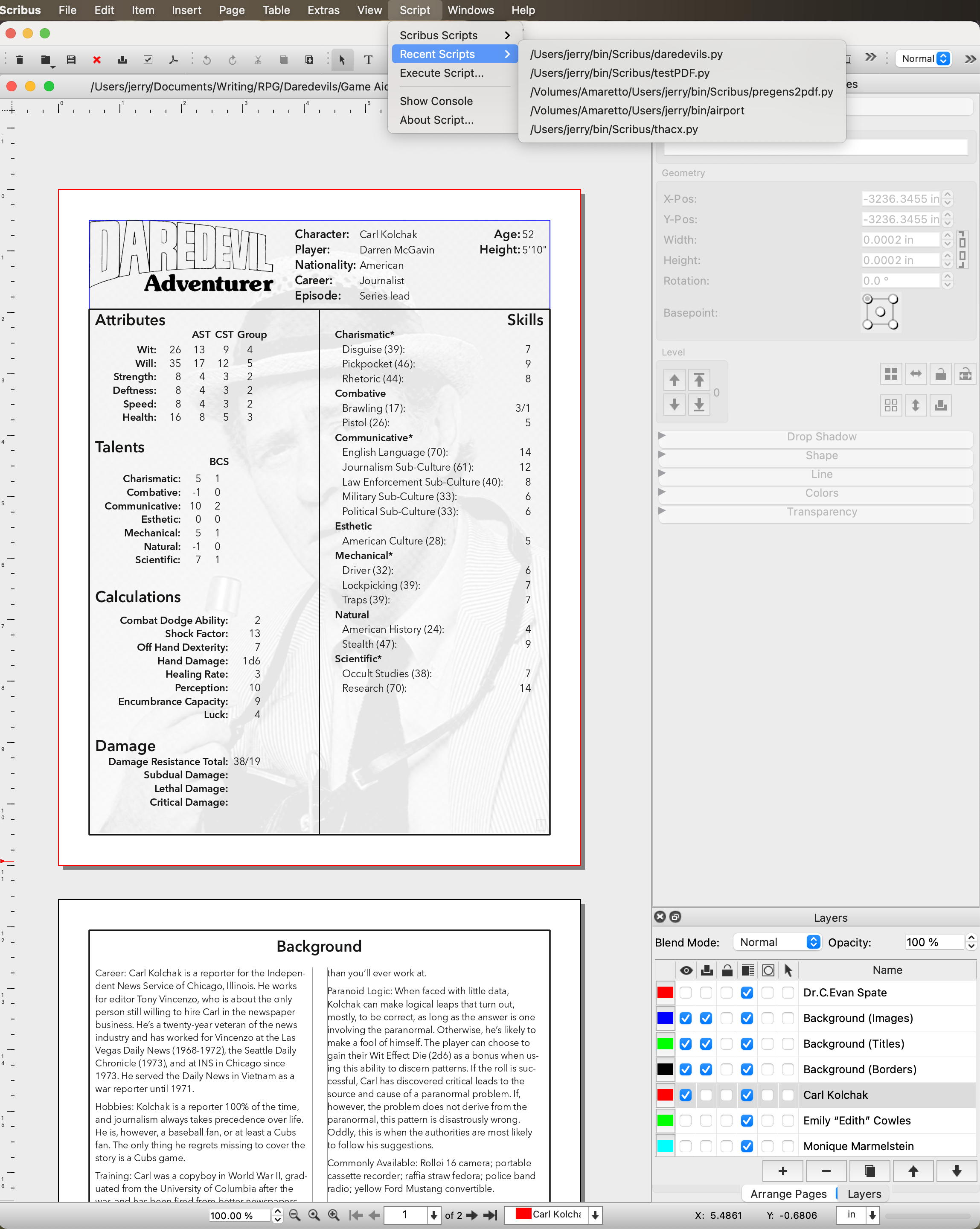
Oh I wish I was there this year. I have the boxed copy of Daredevils as well and the system intrigues me. Would love to play. As for the simultaneous part, I took my cue from Classic Traveller. Combat in that game is simultaneous as well. The short of it; everyone gets to complete their combat action, even if they get blasted in the head. Forces one to really want to get surprise on your opponent.
With two action phases in Daredevils I think their combat system should be much fun! Good luxk.
Jay Murphy in aspen, co at 6:22 a.m. May 28th, 2021
I8NrU
Fascinating. I have classic Traveller and never noticed the mention of simultaneous combat under surprise, or if I did, thought it only applied to surprise. (I’ve never run the game myself, and only played it ages ago.) Going through it now, it doesn’t seem to mention any form of order, either, which makes sense when they have simultaneous actions.
Do they ever describe what it means to have simultaneous actions? I can’t find anything in Books 1-6, but I didn’t literally read every word.
Jerry Stratton in Texas at 1:43 a.m. May 29th, 2021
KxQ3E